History of Feminism Commission
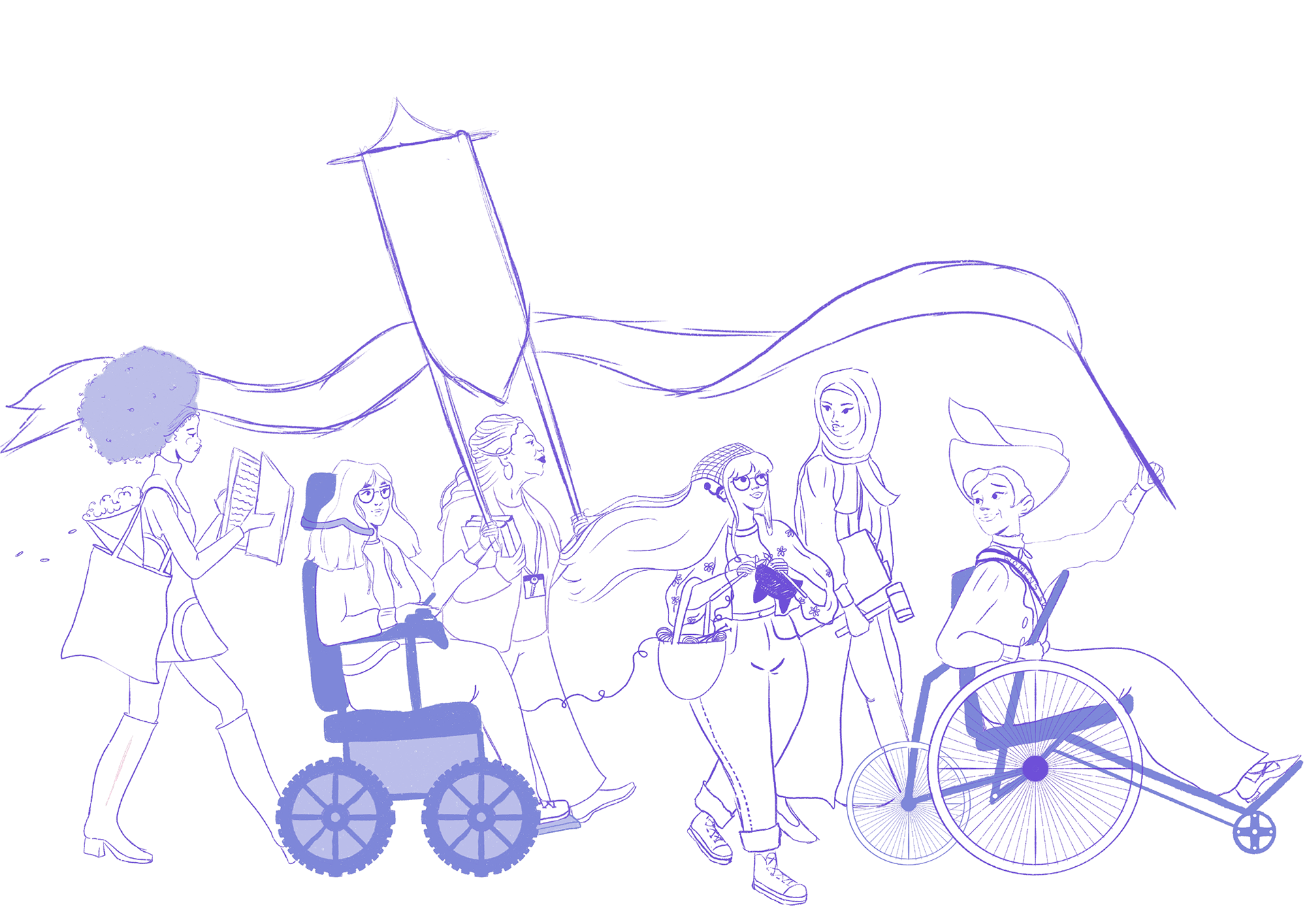
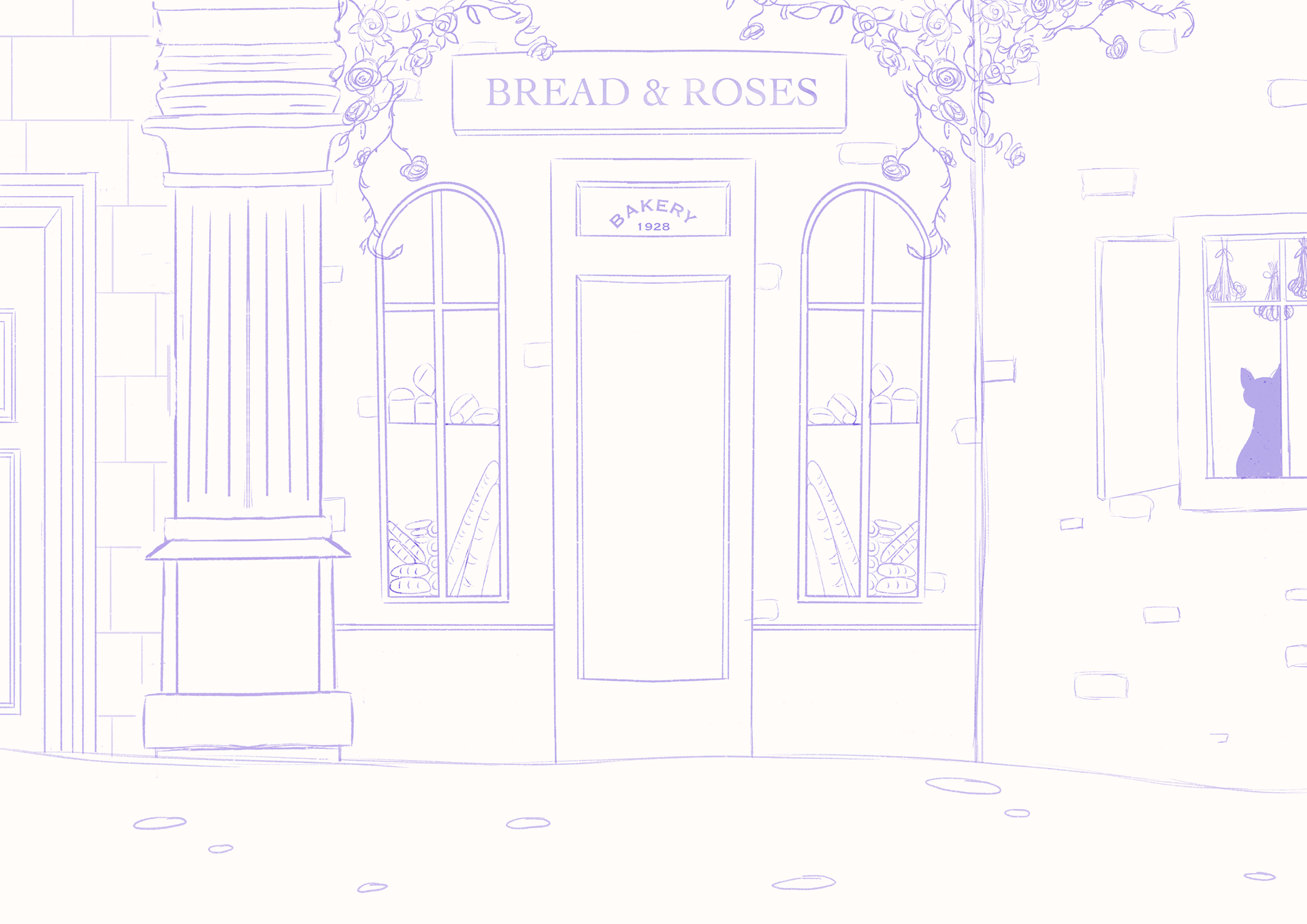
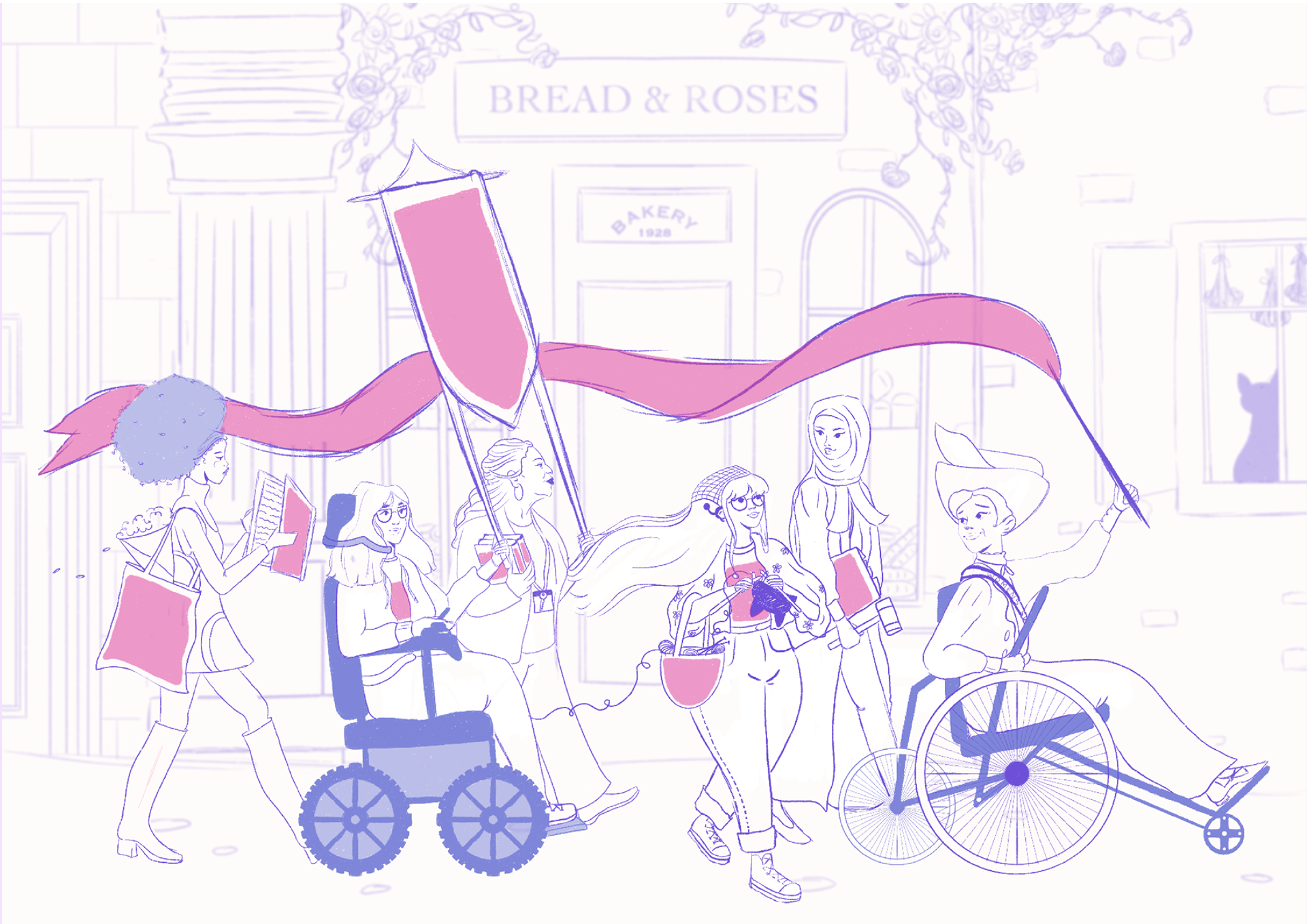
Initial sketches, exploring designs for the march, the background and how the two elements would interact
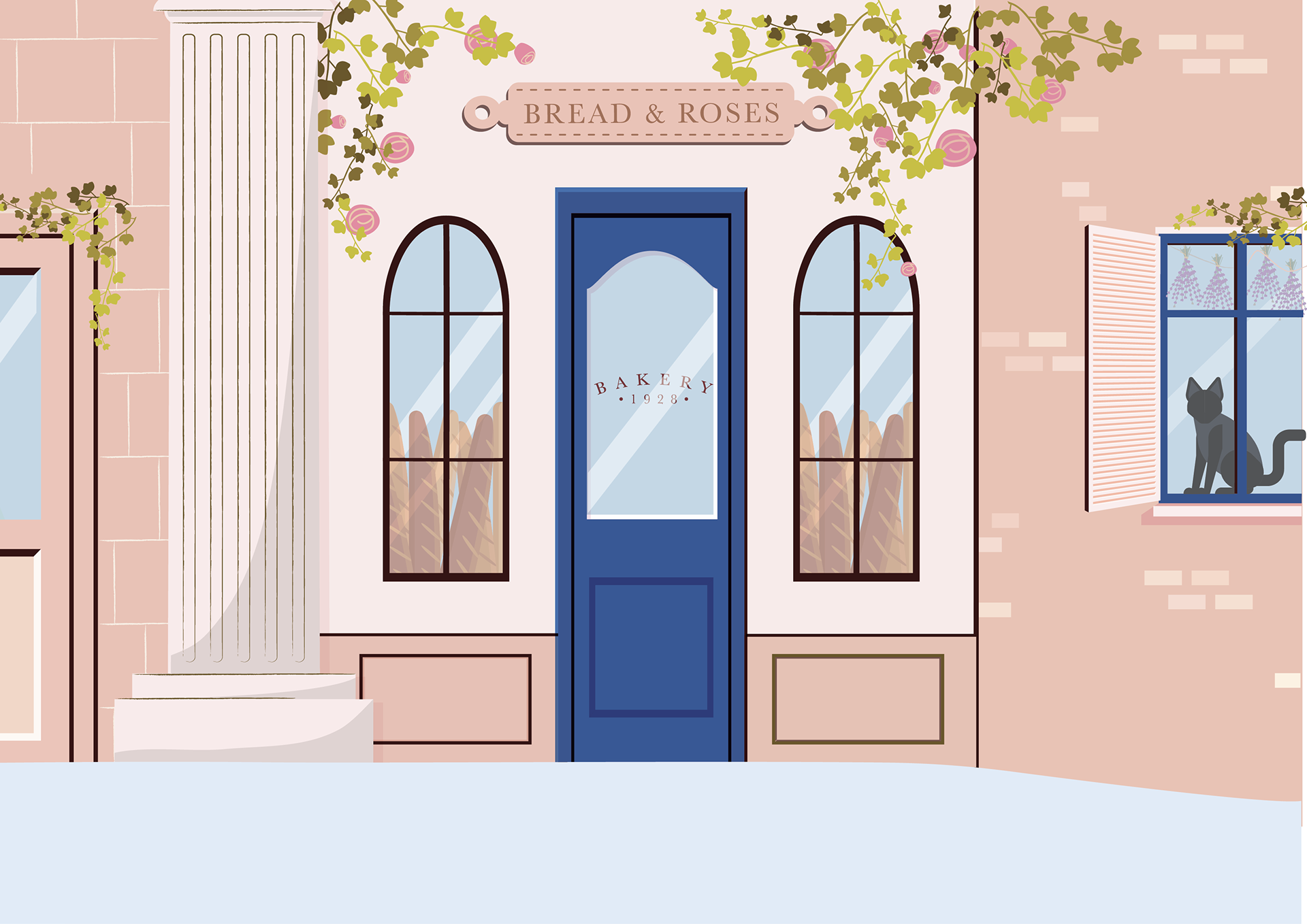
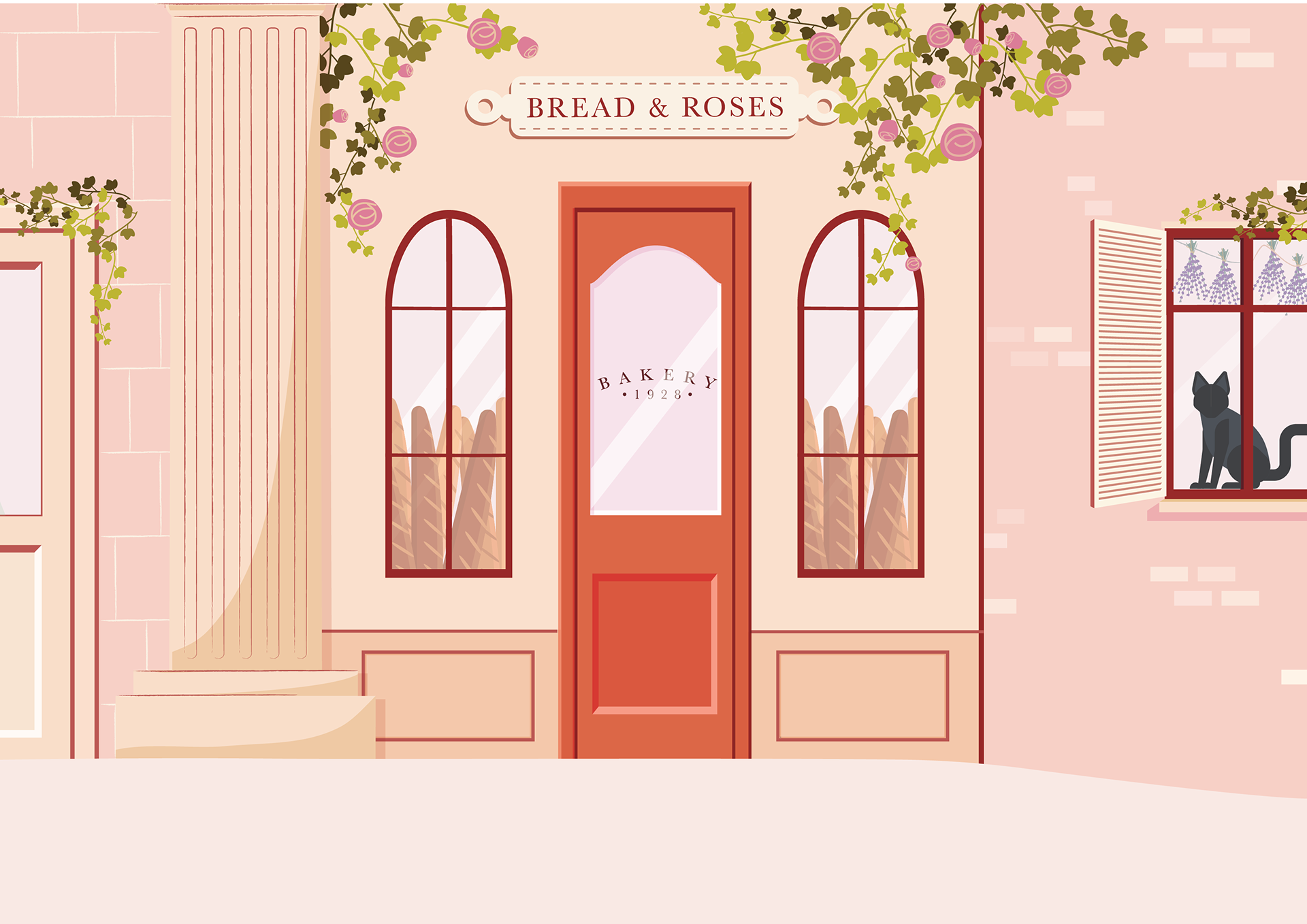
Two examples of a cool tone or warm tone colour palette for the design.
The design of the background art depicts a street with 3 buildings. Each building represents a different arena of society where women have fought for equal rights.
To the very left, the building with a large imposing pillar represents the legal and governmental aspects of the moment.
In the centre is a bakery, representing public places & employment. The name of the bakery is a reference to the quote “bread for all and roses too” a slogan used by the women's suffrage movement in the west during fight for fair and dignified working conditions. Aims to give acknowledgment to the working class women throughout the movement.
The final building represents a home. The black cat and dried herbs are a nod to witchcraft and its connection to historical women's oppression. During the witch trials, disabled women were often persecuted for simply existing.
Colour format of the match. Each women representing a different aspect of feminist history. From first to third wave, highlighting intersectionality and diversity in the movement. The women leading the march is inspired by disabled suffragist Rosa May Billinghurst, a key member of the suffragette movement in the UK.
